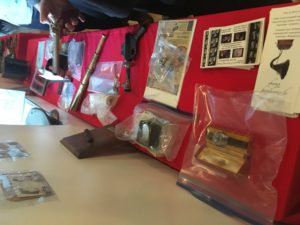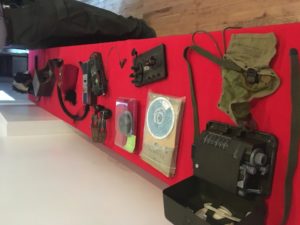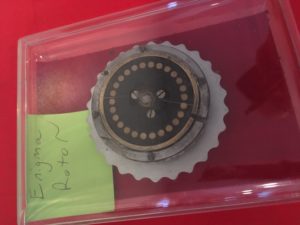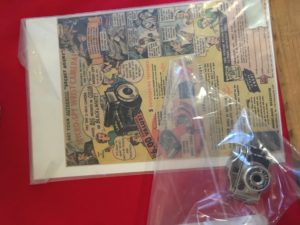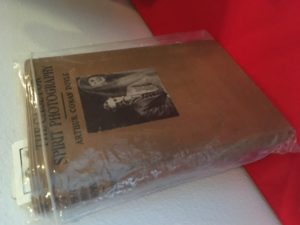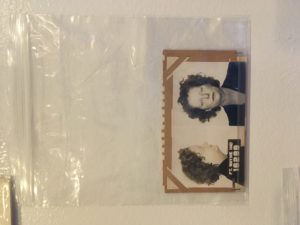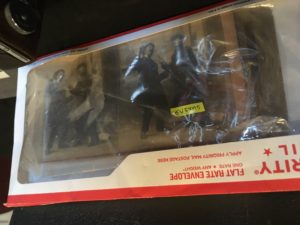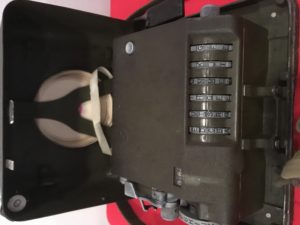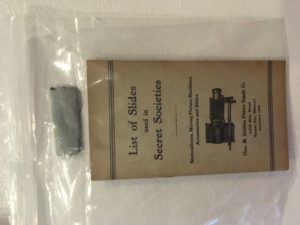Queer Zine Fair Observation
By Taylor Norton
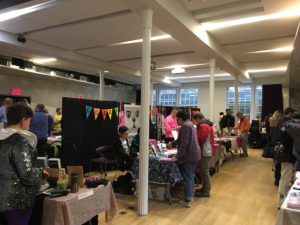
For my 3-hour observation, I decided to go to the NYC LGBT Center for its New York Queer Zine Fair. While this easily could have been applied to my event attendance, I decided to take this a bit further and not only attend the fair, but observe and assess the information and information users that were being shared in this temporal setting.
Upon entering the fair, I could see that the way the 50+ artists were set up allowed for a very specific traffic pattern for attendees. With booths lining the outer four walls and two rows of booths in the middle, people could walk in a circle in one direction while looking at the outside booths and then in another direction for the booths set up in the middle. While there was one large room with all the booths set up, there was also another room for programs and shows. The event happening while I was there was a queer collage party that allowed attendees to make their own collage that would later be scanned and made in to a zine with others’ work.
With each new booth visited, I could see a variety of identities, sexualities, and genders represented and the ways that each person decided to present themselves and their zines were distinctly different. There were tables that shared information on that person’s experience, such as a queer femme who made zines based off of the poet, Sappho, or a gay man’s zine informing people about the different meanings of colored bandanas in the pants pocket of one’s jeans. Besides zines, I also saw t-shirts, buttons, pins, and patches that were obvious to some and not so obvious to others of the wearer’s identity. Semiology, rhetoric, and double meanings could be inferred everywhere, from cat pins to patches of fingers touching flowers to crowns and collars. There were hand-drawn zines, screen-printed t-shirts, and photography zines, among other forms of ephemera. It was fascinating for me to see all of the different expressions and to learn more about a community that I am actively involved in. Two of our class readings stuck out greatly in my mind while going through this fair.
Emily Drabinksi’s 2013 article, “Queering the Catalog: Queer Theory and the Politics of Correction,” was strong in my mind as I watched people walk by booths and engage with others because not only was this an information setting that allowed people to learn more about the community that they identified with, but they were also able to buy (or sometimes trade) items that expressed their identity; an opportunity that is not always presented to them in mainstream information settings. I saw this an opportunity for people to not only queer the hypothetical catalog by learning more vocabulary and ways of expression, but also by engaging with items and eventual artifacts that have the potential to go beyond this fair and make their way in to more mainstream cultural institutions. The more people create and share, the further their messages can go beyond such information settings.
One of Drabinksi’s quotes stuck out in my mind, “The materials themselves are linguistically controlled, corralled in classification structures that fix items in place, and they are described using controlled vocabularies that reduce and universalize language, remarkably resistant to change” (Drabinksi 2013). It was obvious at this fair that there was a vast array of different identities represented here and that both written and visual linguistics were in heavy use. However, opposed to the static ways of traditional cataloging, this fair allowed information users to go from one category to the next with each new booth visited. There was absolutely controlled language in this setting; however, the feeling of learning and being open to others’ experiences allowed users to engage with others more freely in order to further their knowledge.
Another quote by Drabinksi, “Where lesbian and gay studies takes gender and sexual identities as its object of study, queer theory is interested in how those identities come discursively and socially into being and the kind of work they do in the world” (Drabinksi 2013), resonated with me during this observation. Everywhere I looked, I could see people engaging within their own identity circles while taking the time to look at information that taught them about other identity circles. It was both a social and information setting in which discourse through artifacts was encouraged to transcend the settings of the fair.
Not only was I reminded of Drabinksi’s article, but also of Marcia J. Bates’ “Fundamental Forms of Information” article written in 2006. In this article, Bates defines the general idea of what is information and the different types of information. After seeing how intentional people were with the zines they made and the booths they set up to display them, I thought of how Bates writes that, “Other than in a few cases, such as a spontaneous cry of pain or fear, all expressed information is intentionally communicative to others in the environment” (Bates 2006).
While observing how people learned about different identities through the zines and other artifacts, I recognized three main types of information at play here: embedded, expressed, and recorded information. It is very clear that there are several different identities within the queer communities, from pansexuals to bears to doms and subs to femmes, and while observing I thought of Bates’ quote: “Because animals act, they leave evidence of their presence” (Bates 2006). Here people were acting on their gender and sexual identities and actively reaching out for shareable informational objects that represented and showcased their identities.
One example of information being produced from humans’ presence is embedded information. Bates writes, “In short, the embedded information is generally not left by its creators to be informative, but rather is informative as an incidental consequence of the activities and skills of the people leaving the artifacts” (Bates 2006). Many of the creators had started with the idea of processing embedded information from their lives and made them into recorded information. Described as “communicatory or memorial information preserved in a durable medium” (Bates 2006), these zines and ephemera were direct representations of expressed information.
While watching people interact with artists and buy zines, pins, patches, and t-shirts, I couldn’t help but consider the impact of this information setting in a wider capacity. People and their experiences were able to feel validated through the readily available and expressed information and could take this validation—in metaphorical and haptic representations—beyond the fair. As Bates writes, “Recorded information is distinguished here from expressed information because the invention of writing and the development of the technologies to produce durable recorded information appear to have had an immeasurable impact on human cultures and on the speed of development of those cultures. No longer do humans have to try to memorize all that their culture knows; now a lot of that information can be kept in durable form outside the body. The durability and storage efficiency of such information have enabled a great leap in human information processing” (Bates 2006). While seeing people use recorded representations of their identity, I could see a world of information being reborn and growing through the exchange of such information.
